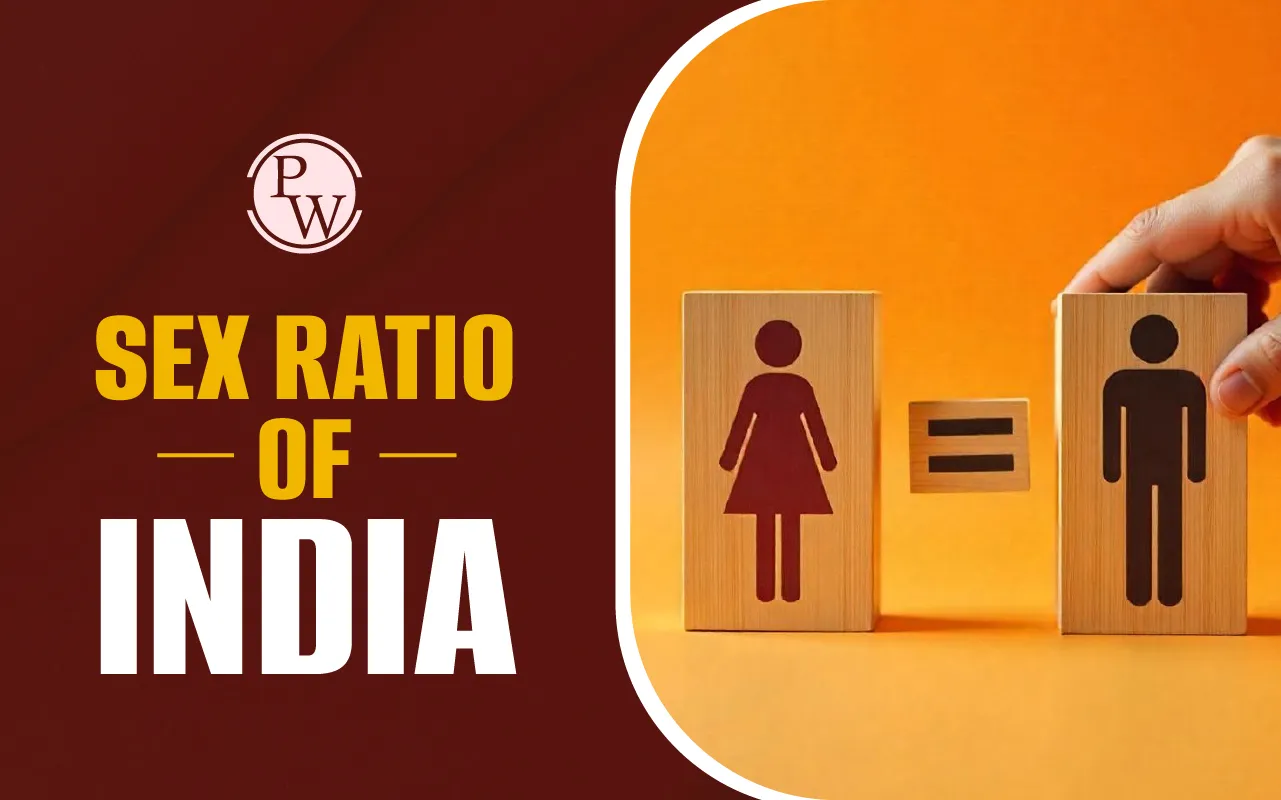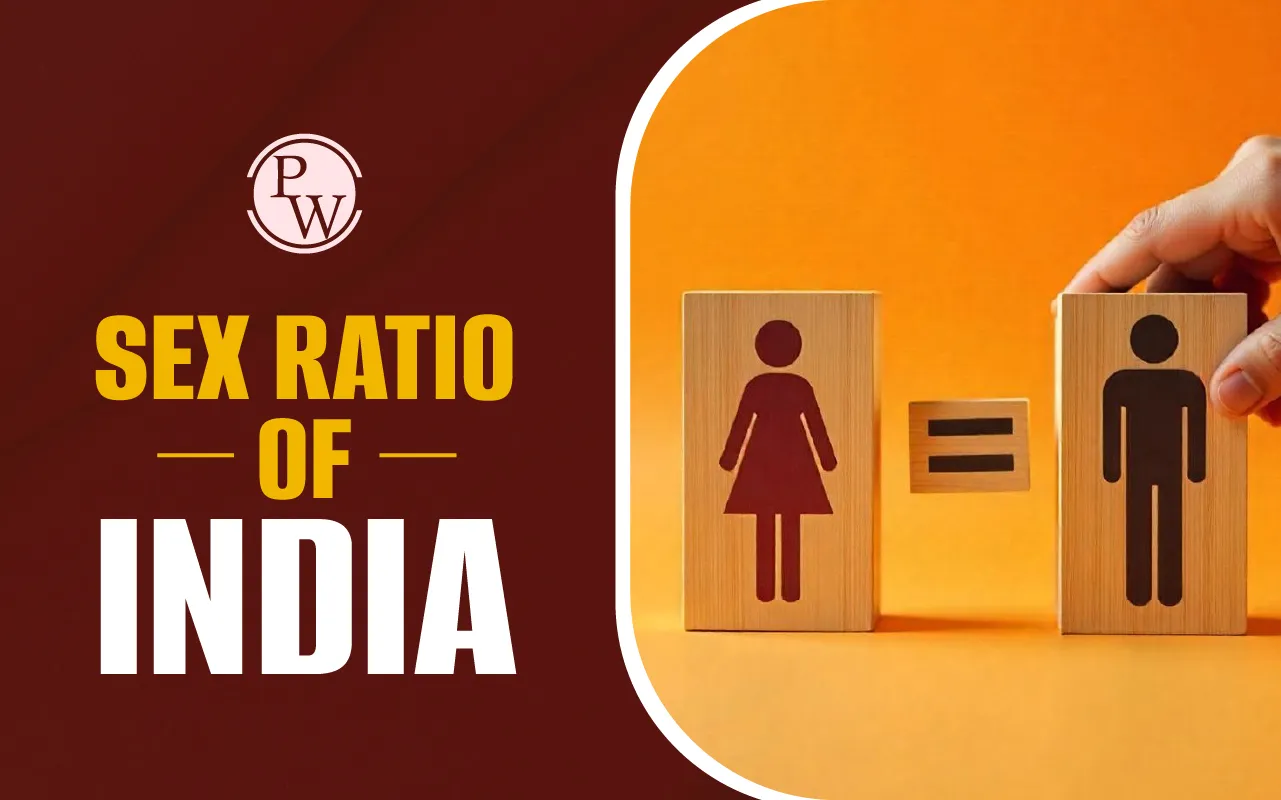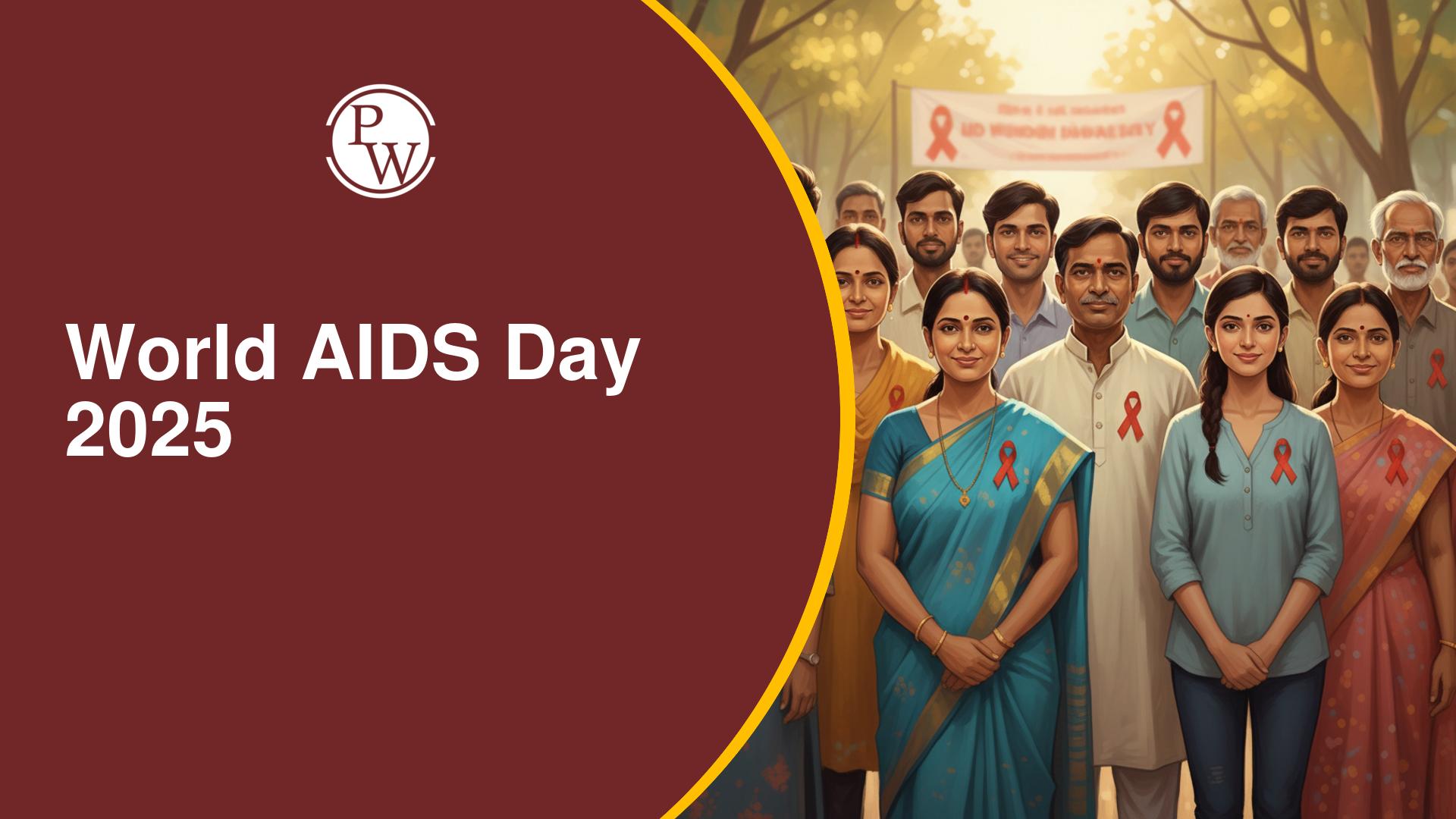

Sex Ratio of India reflects the number of females per 1,000 males in the country. It is one of the most critical indicators of gender equality, social health, and cultural progress. A balanced sex ratio shows that both genders enjoy equal value and care in society.
However, if the ratio is skewed in favour of males, it highlights deep-rooted issues such as gender discrimination, selective abortions, and neglect of girl children. Over the years, India has shown improvement, but many challenges still remain. Read on to explore the latest trends using CRS Data, NFHS-5, and Census 2011 to understand the real picture.
Candidates can now download UPSC Prelims Result 2025 PDF Here!
Sex Ratio of India
The sex ratio of India has long been a critical demographic indicator reflecting the balance between the number of females and males in the population. Over the decades, this ratio has been a subject of concern, with noticeable disparities across states and time periods. From the 2011 Census to the latest Civil Registration System (CRS) data, India has seen fluctuating trends influenced by social, cultural, and economic factors.
Current Sex Ratio in India
India’s population is estimated at 1.44 billion, comprising approximately 743.39 million males and 698.29 million females. This results in a sex ratio of about 106 males per 100 females (or roughly 106:100). Males make up 51.56% of the population, while females account for 48.44%, leading to a gender gap of nearly 45 million more men than women. On the global stage, India ranks 214th out of 236 countries in the female-to-male ratio, underscoring the urgent need for efforts to improve gender balance
Sex Ratio of India - CRS Data
The latest sex ratio of India is derived from the Civil Registration System (CRS), which records births and deaths nationwide. Although not as complete as Census data, CRS offers useful real-time trends. CRS Report for 2022 highlights a concerning trend in Bihar, which recorded the lowest sex ratio at birth in the country, 891 girls for every 1,000 boys.
This marks the third consecutive year of decline, following figures of 964 in 2020 and 908 in 2021. Bihar is the only state to show a consistent drop over this period. Several other states also reported low ratios in 2022, including Maharashtra (906), Telangana (907), and Gujarat (908). In contrast, Nagaland led with the highest sex ratio at birth at 1,068, followed by Arunachal Pradesh (1,036) and Ladakh (1,027).
| State/UT | 2022 Sex Ratio |
| Bihar | 891 |
| Maharashtra | 906 |
| Telangana | 907 |
| Gujarat | 908 |
| Nagaland | 1,068 |
| Arunachal Pradesh | 1,036 |
| Ladakh | 1,027 |
| Meghalaya | 972 |
| Kerala | 971 |
| Assam | 933 |
Sex Ratio of India - MoSPI 2023 Report
The 25th edition of “Women and Men in India 2023” report of the Ministry of Statistics and Programme Implementation (MoSPI) projects that by 2036, India’s population could reach 152.2 crore, with females making up 48.8%, a slight rise from 48.5% in 2011. The Sex Ratio of India 2023 is expected to increase from 943 in 2011 to 952 by 2036, as per this report:
Credit: PIB
Sex Ratio of India 2020-21 NFHS-5
Sex Ratio of India 2020-21 refers to the findings of the 5th National Family Health Survey (NFHS-5), one of the most trusted and large-scale data sources in the country. According to NFHS-5 report:
-
Overall sex ratio: 1,020 females per 1,000 males. For the first time, this ratio crossed the 1,000 mark.
-
Sex ratio at birth: 929 girls per 1,000 boys, up from 919 reported in NFHS-4.
Here are the trends of Sex ratio at birth (female per 1000 male) from 2013-15 to 2017-19:
| Area | 2013–15 | 2014–16 | 2015–17 | 2016–18 | 2017–19 |
| India | 900 | 898 | 896 | 899 | 904 |
| Rural | 902 | 898 | 900 | – | 904 |
| Urban | 888 | 890 | 897 | – | 906 |
Sex Ratio of India 2011 Census
The Sex Ratio of India 2011 Census is still the last official all-India Census data available. According to Census 2011:
-
Overall sex ratio: 943 females per 1,000 males.
-
Child sex ratio (0-6 years): 919 girls per 1,000 boys.
These numbers showed only slight improvement from the 2001 Census, which reported an overall sex ratio of 933 and child sex ratio of 927. Here is the rural and urban Sex Ratio of India as per Census 2011:
Credit: Office of the Registrar General & Census Commissioner
State-Wise Sex Ratio in India
The Sex Ratio of India State-wise, reveals wide differences across the country. Some states perform well, while others struggle with highly skewed ratios. Southern states like Kerala and Tamil Nadu generally show better overall ratios, while Northern states, particularly Haryana and Punjab, show worrying patterns despite numerous interventions. Here is state-wise representation of India’s Sex Ratio 2011:
Credit: Office of the Registrar General & Census Commissioner
States with the Lowest Sex Ratio
- Haryana – 877 females per 1,000 males
- Jammu and Kashmir – 883 females per 1,000 males
- Sikkim – 889 females per 1,000 males
Child Sex Ratio (0–6 years) – Best Performers
- Mizoram – 971
- Meghalaya – 970
- Chhattisgarh – 964
Child Sex Ratio (0–6 years) – Lowest Performers
- Haryana – 830
- Punjab – 846
- Jammu and Kashmir – 859
Union Territories (UTs) – Highest Overall Sex Ratios
- Puducherry – 1,038 females per 1,000 males
- Lakshadweep – 946 females per 1,000 males
- Andaman and Nicobar Islands – 878 females per 1,000 males
Union Territories (UTs) – Lowest Overall Sex Ratios
- Daman and Diu – 618 females per 1,000 males
- Dadra and Nagar Haveli – 775 females per 1,000 males
- Chandigarh – 818 females per 1,000 males
States and UTs with Declining Overall Sex Ratios
- Bihar
- Jammu and Kashmir
- Dadra and Nagar Haveli
- Daman and Diu
- Lakshadweep
Reason Behind Low Sex Ratio of India
Several deep-rooted causes lead to a low sex ratio of India in certain regions:
-
Cultural bias: Preference for sons owing to economic, religious, and social factors.
-
Sex-selective abortion: Despite legal bans, illegal sex determination and abortions still occur in some areas.
-
Neglect of girl children: Girls face higher rates of neglect, poor nutrition, and reduced healthcare access.
-
Dowry system: The Financial burden of dowry can make families view daughters as liabilities.
-
Weak law enforcement: Laws like the Pre-Conception and Pre-Natal Diagnostic Techniques (Prohibition of Sex Selection) Act, 1994 exist but are not enforced uniformly.
Changing these attitudes requires not just laws but sustained awareness campaigns and social transformation.
Government Initiatives to Improve India’s Sex Ratio
The Indian government has launched several initiatives to improve the Sex Ratio of India:
-
Pre-Conception and Pre-Natal Diagnostic Techniques (PCPNDT) Act: Bans sex determination tests before or after conception.
-
Beti Bachao Beti Padhao (BBBP): Focuses on improving awareness, promoting girl child education, and strengthening the delivery of government services for girls.
-
Sukanya Samriddhi Yojana: A savings scheme encouraging families to invest in their daughters’ future.
-
PM Matru Vandana Yojana (PMMVY): Offers financial support to pregnant and lactating women.
-
State-specific incentives: Haryana, Punjab, and Delhi provide cash incentives to families with girl children to discourage gender bias.
-
Tracking pregnant women: Some states now digitally track pregnancies and ultrasound scans to prevent sex-selective practices.
Together, these measures aim to improve both the numbers and the value attached to daughters in Indian society.
In conclusion, the Sex Ratio of India is steadily improving, but progress is uneven. While survey data like NFHS-5 show encouraging trends, CRS and state-wise data still highlight significant challenges in parts of the country. Continuous government action, combined with a strong push for social change, remains the key to achieving true gender balance.
Ready to explore more on social issues, governance, and current affairs? Join Physics Wallah’s UPSC Courses today to enhance your UPSC preparation!
Sex Ratio of India FAQs
What was the sex ratio of India according to the 2011 Census?
What is the estimated sex ratio of India state-wise?
Which state had the lowest sex ratio at birth in 2022?
Which state had the highest sex ratio at birth in 2022?
How is the sex ratio calculated in India?

UPSC Coaching











